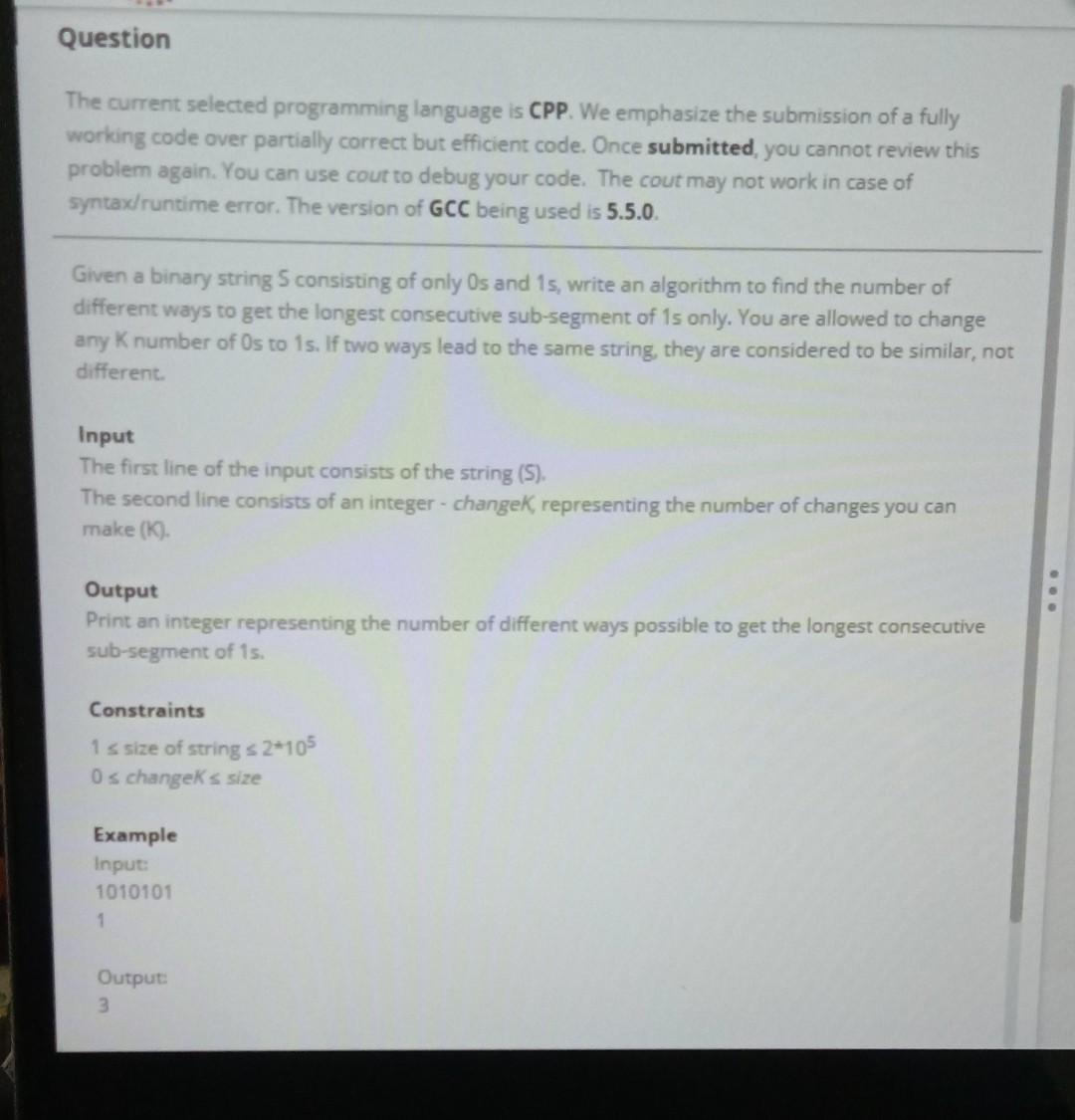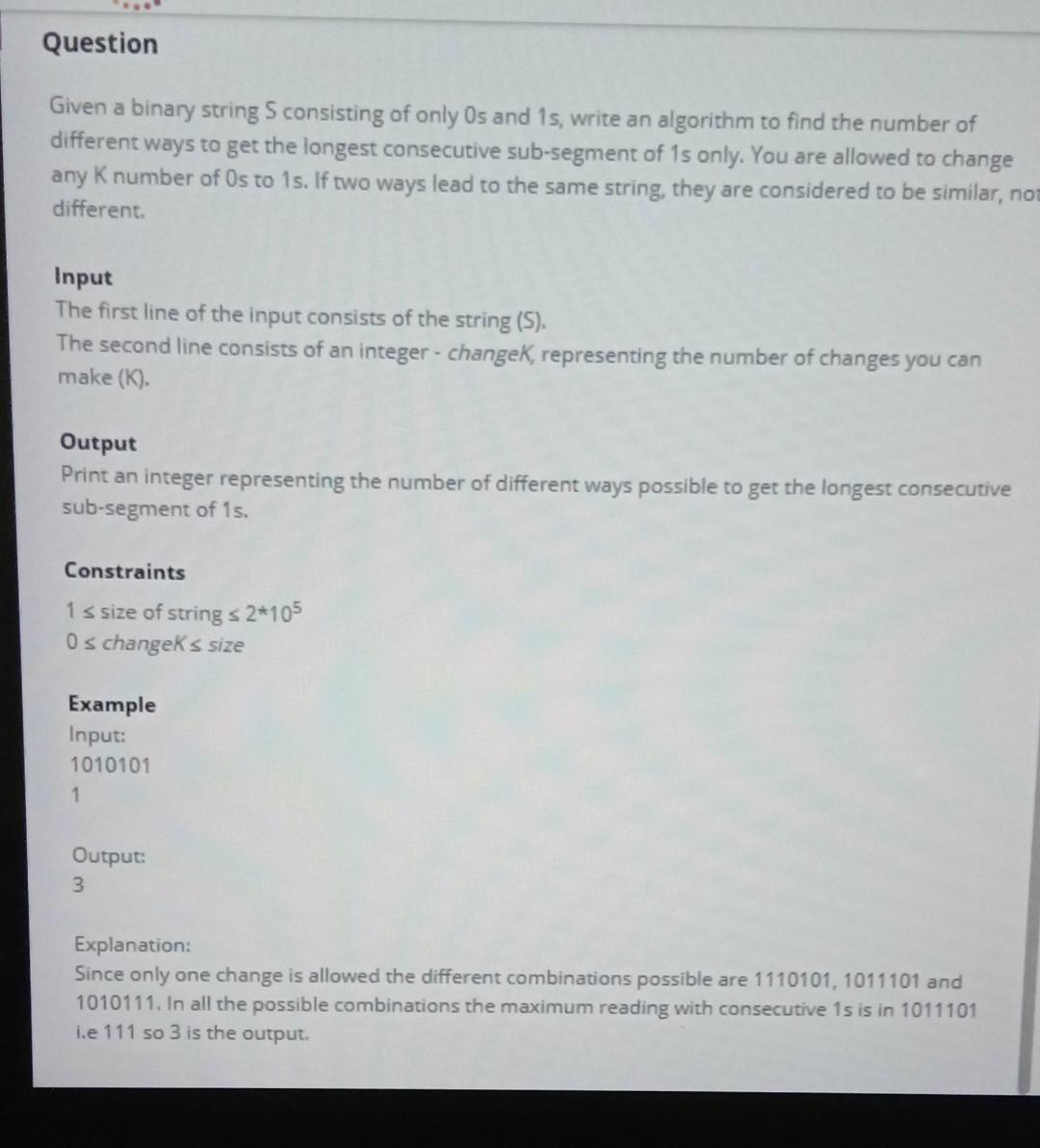Answered step by step
Verified Expert Solution
Question
1 Approved Answer
pls solve asap in any language asap Question The current selected programming language is CPP. We emphasize the submission of a fully working code over
pls solve asap in any language

asap

Question The current selected programming language is CPP. We emphasize the submission of a fully working code over partially correct but efficient code. Once submitted, you cannot review this problem again. You can use cout to debug your code. The cout may not work in case of syntax/runtime error. The version of GCC being used is 5.5.0. Given a binary string 5 consisting of only Os and 15, write an algorithm to find the number of different ways to get the longest consecutive sub-segment of 1s only. You are allowed to change any K number of Os to 1s. If two ways lead to the same string, they are considered to be similar, not different Input The first line of the input consists of the string (S). The second line consists of an integer - changek, representing the number of changes you can make (K) Output Print an integer representing the number of different ways possible to get the longest consecutive sub-segment of 1s. Constraints 1 s size of string s 2-105 Os changeks size Example Input 1010101 1 Output Question Given a binary string S consisting of only Os and 1s, write an algorithm to find the number of different ways to get the longest consecutive sub-segment of 1s only. You are allowed to change any K number of Os to 1s. If two ways lead to the same string, they are considered to be similar, non K different Input The first line of the input consists of the string (5). The second line consists of an integer - changek, representing the number of changes you can make (K). Output Print an integer representing the number of different ways possible to get the longest consecutive sub-segment of 1s. Constraints 1 s size of string s 2*105 Os changeks size Example Input: 1010101 1 Output: 3 Explanation: Since only one change is allowed the different combinations possible are 1110101, 1011101 and 1010111. In all the possible combinations the maximum reading with consecutive 1s is in 1011101 i.e 111 so 3 is the output
Step by Step Solution
There are 3 Steps involved in it
Step: 1

Get Instant Access to Expert-Tailored Solutions
See step-by-step solutions with expert insights and AI powered tools for academic success
Step: 2

Step: 3

Ace Your Homework with AI
Get the answers you need in no time with our AI-driven, step-by-step assistance
Get Started


